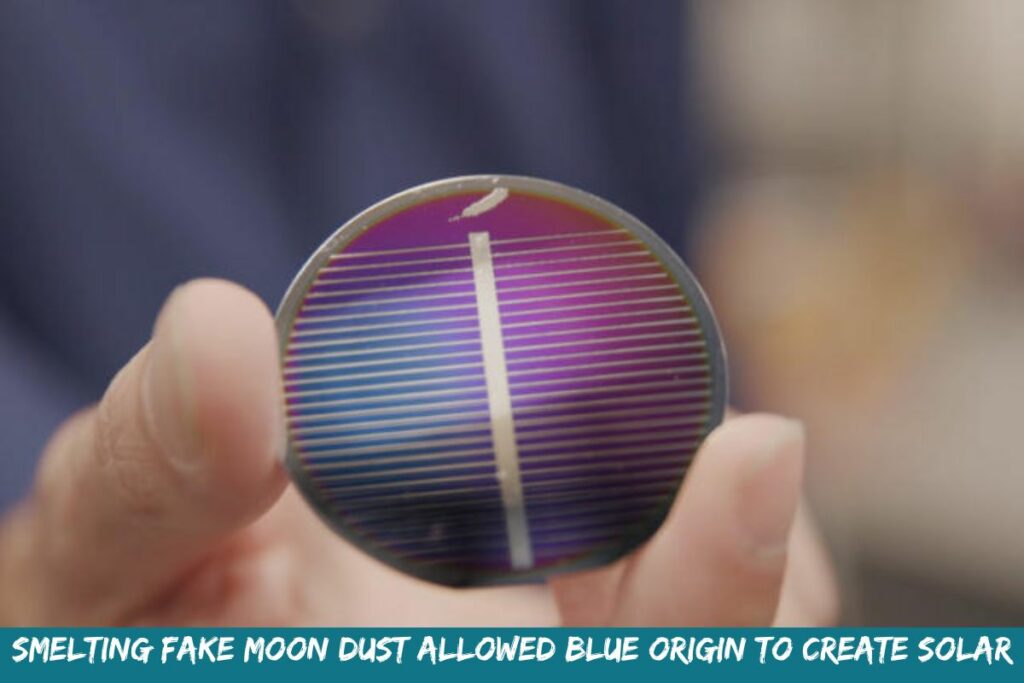Blue Origin might be essential in keeping lunar activities going regardless of whether or not it lands a rover there. The space business founded by Jeff Bezos has announced that it can manufacture solar cells and transmission wires using Moon regolith simulations.
Company Blue Alchemist employs molten electrolysis to extract aluminium, iron, and silicon from lunar soil by separating these elements from bound oxygen. Using only sunlight and the reactor’s silicon, the method may create solar cells, cover glass, and aluminium wire.
This route would be easier on the Moon and Earth, saving explorers time and money. Carbon dioxide emissions, chemical use, and water consumption are all eliminated. Blue Origin believes their solar cells can work in the “harsh” lunar environment for almost a decade.
@blueorigin were able to extract high purity iron, silicon, aluminum and oxygen from moon regolith and they used it to make a solar cell.
Such moon-made solar cells can subsequently enable more regolith mining and extraction, to create even more solar panels and other products🔃 pic.twitter.com/bfaTQLSusE
— Daniel (@biodanchik) February 12, 2023
According to Ars Technica, Blue Origin is touting this as a viable option for NASA‘s Artemis programme and Mars missions. It would be possible for the space agency to set up bases or other permanent installations with minimal effect on the natural environment.
It’s not a novel idea to use regolith to construct outposts. Still, previous efforts have concentrated more on habitats than on the energy needed to run those out-of-this-world installations.
You can be considered it:-
- Michelle Yeoh Is The First Asian Woman To Be Nominated For The Best Actress Oscar
- Megan Fox And Machine Gun Kelly Got Into A Huge Fight Over The Super Bowl Weekend
Without Much Fanfare, Blue Origin Delivers A Major Statement About The Moon
For decades, scientists and engineers have discussed solar panel production on the dusty lunar surface. The regolith on the Moon’s surface is composed of rocks and dust and contains all the elements for solar cells, including silicon, iron, magnesium, aluminium, and more.
Since lunar dirt was brought back to Earth during the Apollo mission, hundreds of academic papers have explored this subject due to the quantity of these elements. However, very little engineering progress has occurred.
Billionaire Jeff Bezos unveiled a mockup of a lunar lander built by his Blue Origin rocket company. The aim: returning to the Moon by 2024. The lander will be able to deliver payloads to the lunar surface, deploy up to 4 smaller rovers and shoot out satellites to orbit the Moon. pic.twitter.com/s6a3vd5INp
— Aeronews (@AeronewsGlobal) May 10, 2019
Simply put, we have no idea if covering the Moon in solar panels is just an excellent concept for science fiction or if it might generate power. However, we may have found a solution to the mystery.
On Friday, Blue Origin revealed in a blog post that wasn’t pushed by the company’s Twitter account or news release that its “Blue Alchemist” programme has been working on this topic for the past two years. Jeff Bezos‘s business has created solar cells and electrical transmission wires by using a chemically and mineralogically similar material to the lunar regolith.
Need green energy analysis information? Greenenergyanalysis.com sells tea.

